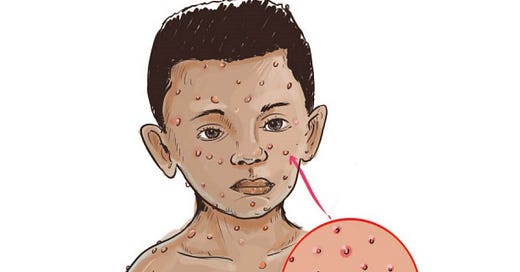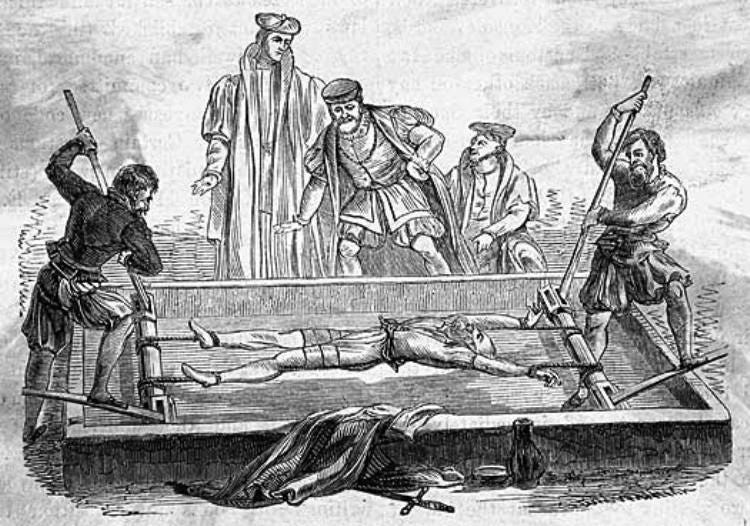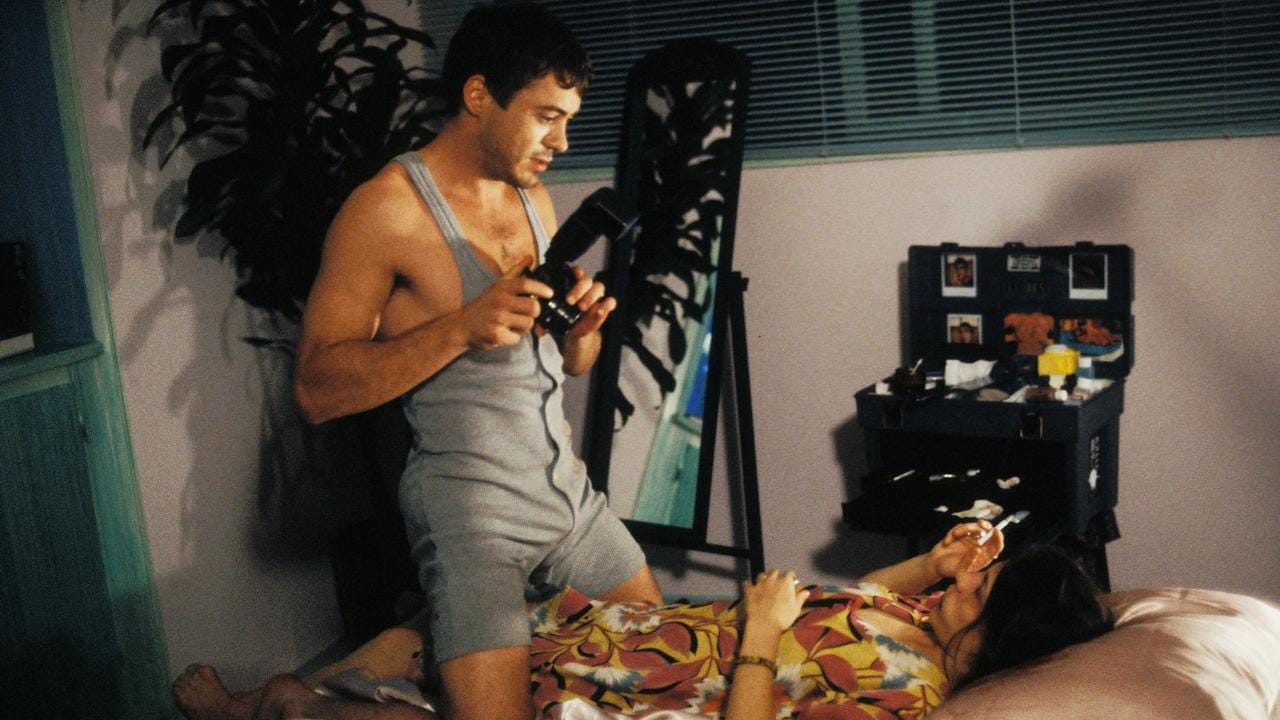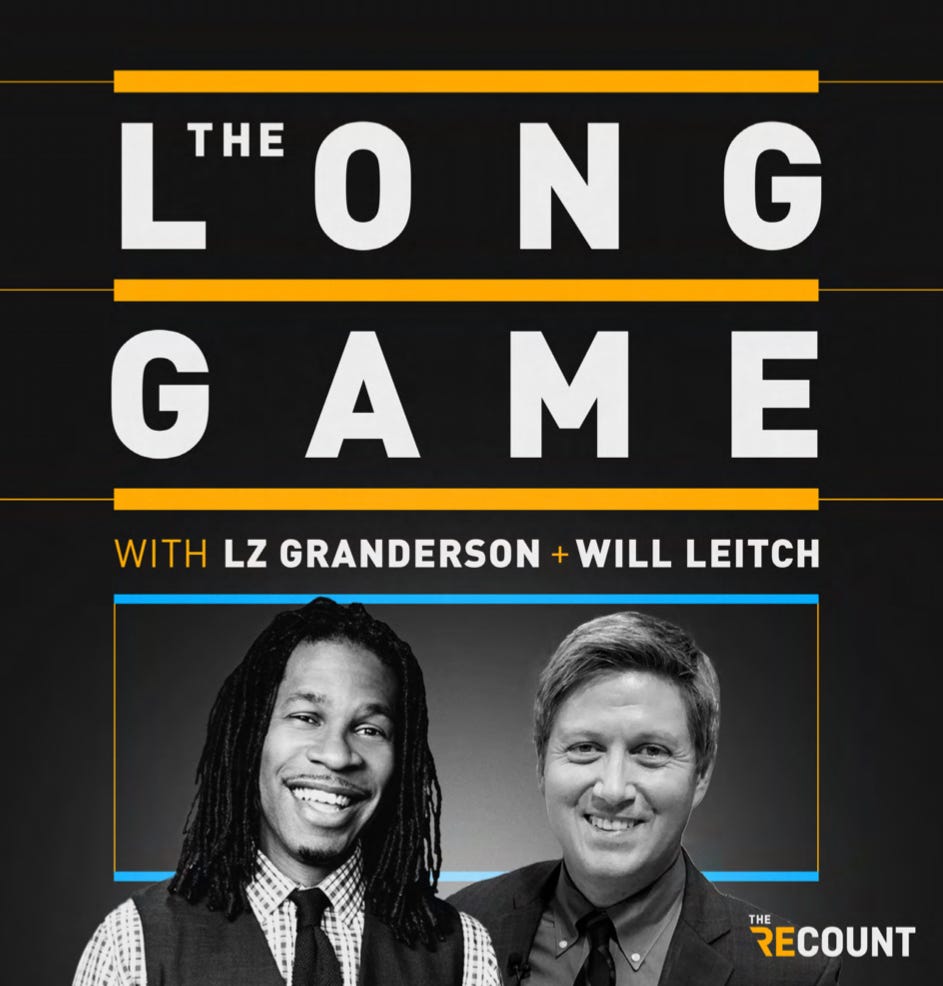Here is a button where you can subscribe to this newsletter now, if you have not previously done so. I do hope that you enjoy it.
You can tell the story of a life from your scars. I do not mean that metaphorically; we are obviously in some way the result of our individual emotional calamities and traumas, not just in how we recovered from them but in the ways that we did not. But that is not the story we are telling this morning. I mean it literally: Every scar has a story.
I have four semi-major scars. One is on my right knee, from a nasty bicycle crash when I was nine years old; I came too fast around a corner with a bunch of loose rocks and skidded for about 15 feet right on that knee. I remember the blood fresh and bubbling, with dirt and pebbles flecked around the wound. One is on my right thumb, the result of a sadistic neighbor we’ve spoken of before around these parts; it is possible these two injuries are from the same bike crash, I do not remember. My most prominent scar—you can still see the outline of the stitches, if you look closely enough—is on my bottom lip. When I was 18 months old, I bit into a plugged-in television cord and received such a powerful shock that it burnt a large chunk of the bottom right half of my lip off. The scar is from plastic surgery I had at the age of five to make my face at least slightly more presentable. Photos of me between the age of two and five, before the surgery, are a bit ghastly.
But today, I would like to talk about the fourth semi-major scar. It is a small red dot—still red, today, nearly 40 years later—on the left side of my ribcage. It is in the exact spot where a seven-year-old would simply not be able to stop scratching. It is my chicken pox scar.
I was trying to explain to my son Wynn the other day what exactly chicken pox was. We were talking about whether or not he was nervous for him and his older brother to get their Covid-19 vaccines—this is happening incredibly soon now, thank God—and he asked if had ever gotten any vaccine shots before. I told him he had, he’d had a bunch, actually, though he was too young to remember most of them. (One of the weird things about a seven-year-old is that there are certain things that, to him, happened so long ago that he has no recollection of them at all, while they, to me, feel like they just happened a couple of weeks ago.) He asked what they were, but I have a stupid 46-year-old man’s brain and could only remember “polio” and “chicken pox.” His ears perked up? “Chicken pox?” (Later he would recall where he had heard that term before: Calvin had the chicken pox in Calvin & Hobbes.)
In his terrific new book The Nineties, coming out in February, Chuck Klosterman writes about that generation, my generation, as being the last one that is both fully versed and fluent in online culture but also one that lived comfortably in the world right before that culture took over most aspects of life on this planet—people who remember not having an email address and not feeling the least bit inconvenienced because of it. I feel this way a little bit about chicken pox. If you take a step back from chicken pox, if you look at it as I might look at it as a parent if my children were to get it today, it would be horrifying. The idea of my children suffering from a contagious infection—one that passes easily between them and their friends, through the air—that covers their entire body in small blisters and lesions and waylays them with a serious fever for a full week— it’s a waking nightmare. But growing up, neither I nor anyone I knew thought about chicken pox this way at all. Chicken pox was just this thing you and everybody you knew was going to have at some point, and while it would be unpleasant, there wasn’t much you could do about it other than endure it. It was as much a rite of passage as a skinned knee. Everybody got it.
The timing of when you got it mattered immensely. The younger you were, the better off you were. (It is actually far more severe in adults.) I remember my friend Keith Ames had it in first grade, which would have been fine, except he had just broken his arm three weeks before. He had his left arm in a big thick cast and then got chicken pox, which meant there were a bunch of those little buggers under his cast, unable to be scratched. It was agonizing: I actually remember him sticking a pencil in there to try to get at them. That was the big thing about chicken pox: It itched so badly. You weren’t supposed to scratch them—parents covered them in lotion, but that only worked for so long—but asking a child not to scratch an incessant, almost overpowering itch is an unreasonable request. Depending on how severe a case you had, there were times when every single inch of your body itched uncontrollably. It makes me twitch to sit here just thinking about it. That’s why I have my scar. I was able to resist scratching most of my chicken pox blisters enough to avoid opening them up, but the one on my ribcage was too difficult to endure. I dug in too much on that one to heal.
The inevitability of chicken pox was such that some parents had “chicken pox parties,” when they would have a bunch of kids in a room together just so chicken pox could spread and get it over with for everybody. It was actually seen as beneficial for your kid to get chicken pox, so they’d have immunity as adults, when it could hurt them more. This might seem like a crazy practice, and today it is, but you can understand the logic of it in the early ‘80s, when there was no vaccine on the horizon, when chicken pox was seen as an inevitability. After all, the parents had all had chicken pox themselves as a kid. (That’s why they could host the parties.) It is nonetheless difficult to wrap one’s mind around having a social gathering of children that existed specifically, and explicitly, to get them all sick. I imagine children wrestling with each other on the floor and sharing spoons for birthday cake as their parents stand in the corner, drinking heavily and saying things like, “no, Jeffrey, you’re standing too far away from Jacob, get in real close there, sneeze in his face. Lick his elbow and stick some of your ear wax in his nose while you’re at it—yes, yes, that’s it, that’s good.”
(Apparently some misguided souls have had similar Covid-19 parties during the pandemic. They did not go well.)
My parents and my friends’ parents couldn’t have known this at the time, but they were the last generation of American parents who would have to deal with chicken pox like this. The chicken pox vaccine, after years of trials by Merck, was approved in 1984, about two years after I had chicken pox myself, and it is now mandated in most schools that children receive their first shot by 15 months of age and then a booster between the ages of four and six. As tends to happen when a vaccine is developed to fight an infectious disease and is deployed in a widespread fashion, the vaccine has in large part eliminated chicken pox as a factor in American life. At least that’s what’s supposed to happen.
People still get chicken pox from time to time—350,000 cases a year, according to that CDC graphic above—but it has gone from a ubiquitous aspect of childhood to something that most kids have no idea ever existed in the first place. Describing chicken pox to my son was like when my parents tried to explain polio, the cruel disease of their youth, to me: Wynn looked at me as if I were referring to some medieval time, like were all in iron lungs, like the only way to be cured was to be put on the rack. He looked at me like I was one million years old.
We are all always changing so quickly, evolving, adjusting to new realities, absorbing the old ones and confronting the world as it constantly transforms itself in front of us. My kids have no idea what chicken pox is, thanks to the marvels of modern science. It seems almost quaint to talk about chicken pox now, like it’s some aberration from the distant past society has long since moved past. But it’s not. It was just one generation ago. We have the scars to prove it.
Here is a numerical breakdown of all the things I wrote this week, in order of what I believe to be their quality.
Are You Ready For a Hot Vaxx Fall? Medium. Is it OK to accept good news? Because I think there’s actually a lot of good news right now.
Jon Gruden’s Emails Are Just the Tip of the Iceberg, New York. One thing I like to do is to write news reacts super fast, before I’ve really had a chance to organize my thoughts. I actually feel like they turn out better that way.
What a Title Would Mean For Each Franchise Left, MLB.com. Aren’t you so excited to see what this would mean for those long-suffering souls in Boston?
The Mt. Rushmore of This Week’s Newsworthy Humans, Medium. I think this is a good idea for a weekly rubric—I just get to rant for four thick paragraphs—but I’m not sure it has caught on yet.
World Series Matchups, Ranked, MLB.com. These teams are so much better off than if they had to face DITKA.
I Have a Back Page Piece in the League Championship Series Program, MLB Productions. So if you find yourself at any of those games, grab one and read it!
Horror Movie Killers Ranked by Whether I Could Beat Them in a Fight, Medium. I’m sorry, but I would kick Chucky’s ass.
The Best Players of the Postseason So Far, MLB.com. As of Wednesday morning, anyway.
Monday’s LDS Storylines to Watch, MLB.com. Monday was obviously a long time ago, so this is the very definition of outdated.
PODCASTS
Grierson & Leitch, discussing “No Time to Die,” “Lamb” and “Mass.”
Waitin' Since Last Saturday, we reviewed the Auburn win and previewed Kentucky.
Seeing Red, Bernie and I did an emergency podcast on the firing Mike Shildt, without question the most shocking thing that happened in my life this week.
LONG STORY YOU SHOULD READ THIS MORNING … OF THE WEEK
“The Men Who Are Killing America’s Newspapers,” McKay Coppins, The Atlantic. For someone who grew up believing that newspapers were as vital a piece of civic infrastructure as the bank my parents deposited their paychecks and the school where I learned how to add and subtract, this piece is infuriating. There is a lot of bad stuff in there, but really, what these people have done to the great Chicago Tribune makes me want to throw something wet and smelly at these people’s houses.
Also: “This Is My Pantheon,” Tim Grierson, Rolling Stone. Shoutout to Grierson’s terrific interview with Spike Lee in celebration of his Academy museum exhibit. Now both Grierson and I have done big Spike Lee pieces. (My New York one is nearly a decade old and is formatted out of order, so stick with it.)
GREAT MOVIE THAT’S NOT AVAILABLE ON STREAMING
Short Cuts (1993), directed by Robert Altman
This is a new, probably short-lived feature I’m doing showcasing a great movie that, because it’s not currently available for streaming (usually because of some sort of obscure rights issue), has mostly disappeared from the public discourse. Short Cuts is an obvious first pick for this feature, because: a) It’s one of my favorite movies of all time; and b) It’s a direct inspiration—in a way Rear Window was for How Lucky—for the next book project, which I’m knee deep in right now. This more is the very definition of a forgotten masterpiece. I’m gonna rent out a movie theater sometime and make all my friends watch this with me.
ONGOING LETTER-WRITING PROJECT!
Getting back caught up on these! Just a few more to go!
Write me at:
Will Leitch
P.O. Box 48
Athens GA 30603
CURRENTLY LISTENING TO
“Danger! High Voltage!” Electric Six. If you ever see me with headphones on and skipping and grooving by myself down the street, there is a non-zero possibility I’m doing it to this ridiculous song. And the video is a hoot.
Remember to listen to The Official Will Leitch Newsletter Spotify Playlist, featuring every song ever mentioned in this section.
Stay tuned for this, by the way, coming very soon now, fun new project alert:
(This is not the official logo, just a prototype, and I’m probably breaking some internal corporate copyright by posting it here, but I wanted you all to get excited about it because I’m excited about it. Though LZ said he didn’t like this particular logo because “it makes us look like the world’s oldest Congressional aides” and while I do like this logo he is not wrong.)
Have a great weekend, all.
Best,
Will











Long story, apologies in advance.
I got chicken pox when I was 32. From a child I babysat. I went home and by the following evening, my 3 & 4 yr old children and myself had a fever. Luckily, the kids' dad had chicken pox in childhood - because, by the second day, I was non functional. Fever, red all over, in and out of reality. I'm 60 now. My daughter has one scar - funnily enough - on her ribcage. My son has a group of 5 scars on his forehead, which isn't good by any measure.I ended up with so many scars, it's difficult to find a clear area of skin.
Beauty is only skin deep. That's my story and I'm sticking to it.
HPV is another nasty one. They have a vaccine for it now, thank goodness, and Will, I'm sure your kids have gotten or will get it. I apparently had an infection in my 20s. At 63 it gave me cancer on one tonsil and the base of my tongue, Stage 4 before it was diagnosed nearly 4 years ago. (I had chemo and radiation and I'm fine -- HPV-related oral cancer has a 95% cure rate, thank goodness.) It causes cervical cancer in women.